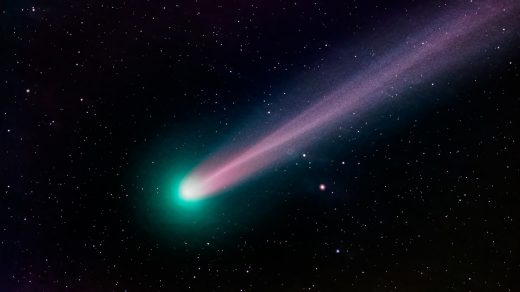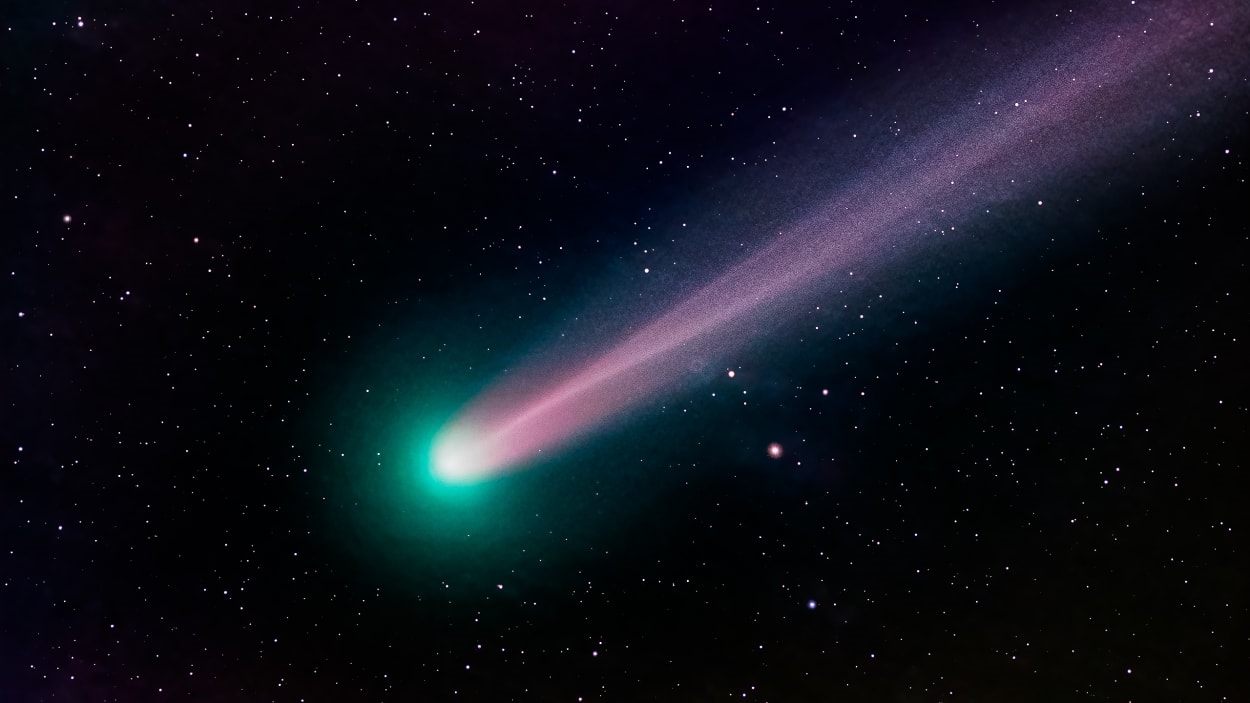A green comet will streak the sky near Earth for possibly the first time since the Stone Age
A rare comet, a jewel in the night with a dashing bright green nucleus, will grace the skies near Earth for what might be the first time since the Stone Age.
The comet, dubbed by NASA as C/2022 E3, was first spotted by astronomers at the Zwicky Transient Facility on Palomar Mountain in California in March 2022. (At that time, it was flying past Jupiter.) Scientists believe it has traveled billions of miles from its origins at the fringes of our solar system to reach the inner planets.
On February 1, it will pass its closest point to Earth: 26.4 million miles from the surface, where stargazers can behold it through telescopes, binoculars, or maybe even with the human eye alone.
“If C/2022 E3 has ever passed through the solar system before, it would have last been seen in the sky more than 10,000 years ago,” Jon Giorgini, a senior analyst at NASA’s Jet Propulsion Laboratory, told National Public Radio. Some analysts predict the comet could follow an orbital trajectory within the solar system, and will eventually be pulled back around by the sun’s gravity, but others believe the orbit’s eccentricity—a measure of its deviation from a perfectly round path—is so great that it will never come back around, instead essentially slingshotting into the vast universe, hurtling through space indefinitely.
But in either timeline, February 1 will be a once-in-a-lifetime event. “We don’t have an estimate for the furthest [the comet] will get from the Earth yet, but if it does return, it won’t be for at least 50,000 years,” Jessica Lee, an astronomer at Royal Observatory Greenwich, told Newsweek.
“Countless long-period comets have never been seen by human eyes,” NASA told CBS. “[For some], the last time they passed through the inner solar system, our species did not yet exist.”
A cloud baby from far, far away
As Newsweek reported, scientists believe the comet was likely born in the Oort Cloud, a forbidding shell of icy objects that encases the entire solar system, with an estimated 2 trillion frozen celestial bodies floating in its expanse—some rocks as big as mountains. Most comets with long orbital periods are thought to hail from this faraway ether, which begins at an altitude of 186 million miles from the sun and stretches out to 9 trillion miles from the sun.
Scientists believe the Oort Cloud is composed of interstellar material left over from the formation of the solar system—planetesimal detritus, which can be knocked out of place and sent shooting through space by stars zooming by, or other cosmic pinballs. However, they have yet to observe any object within the Oort Cloud itself, meaning that its enormous, looming presence is still theoretical.
But for the rest of us, the existence of comet C/2022 E3, at least, might be proven by our own eyes. According to NASA, it can be observed in the Northern Hemisphere throughout the month of January (during which it will also reach its closest point to the sun), either with “binoculars or a small telescope.”
Look out just before sunrise: “The new long-period comet has brightened substantially and is now sweeping across the northern constellation Corona Borealis in predawn skies,” read a release on December 24. While it’s currently still too dim to see without tools, NASA predicts that by February, it could be bright enough to be visible to the human eye alone, in dark rural night skies, away from city lights.
Those who venture out are in for a magnificent showing: a comet radiating green, with a “short broad dust tail and long faint ion tail.” Comets transform into their iconic shape when they approach the sun and their cores are swept by solar winds, spewing trails of gas and dust as they streak through the sky, leaving a “tail” that can last for millions of miles.
To get the best glimpse, check skywatching apps, such as Google Sky, SkySafari, or Star Tracker, to monitor the comet’s whereabouts from your location throughout the month.
(21)



